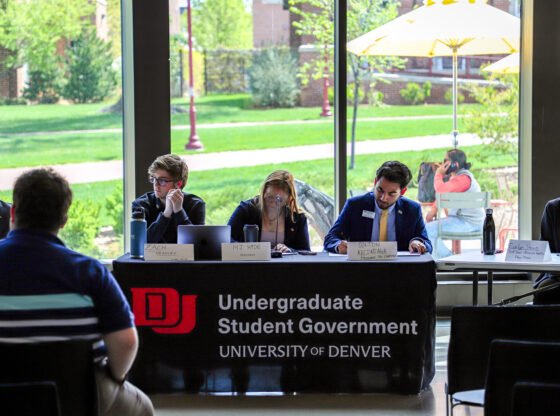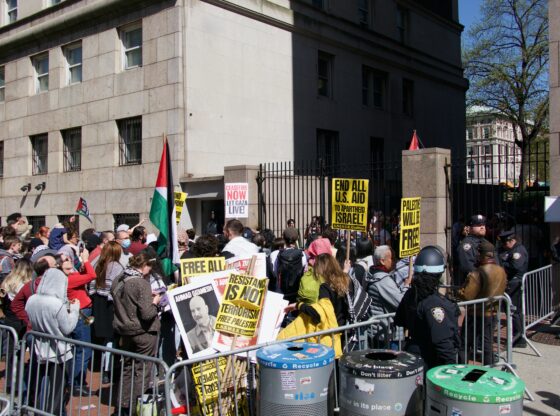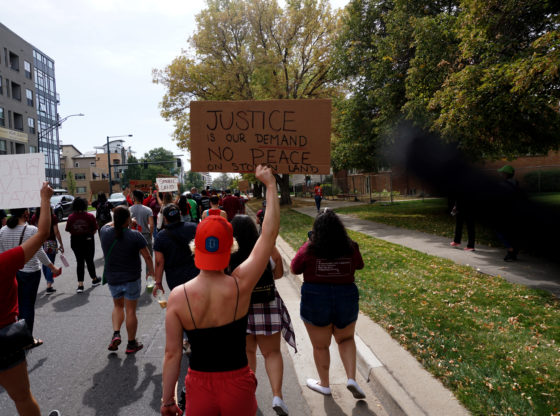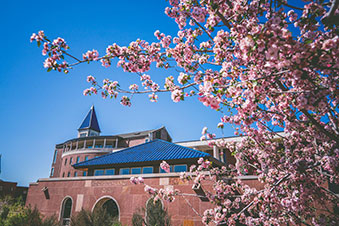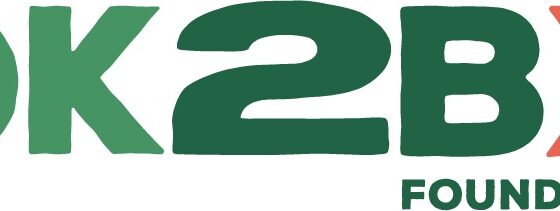This article is part six of a seven-part series that focuses on how sustainability impacts students on a college campus. This series goes in-depth on topics that intersect with sustainability, such as energy use, food waste, environmental racism, recycling, compost and more.
Hurricane Sandy, Maria, Katrina, the Dakota pipeline, Standing Rock are only a few of the catalysts for environmental injustices that have continuously shaken the nation.
“The disproportionate impacts on BIPOC communities of weather-related disasters—such as heatwaves, flooding, and winter storms—are on the rise in frequency and severity because of climate change,” said associate professor for DU’s graduate school of social work Lisa Reyes Mason.
In Flint, MI, more than half of the population is Black, and they have struggled with unsafe and contaminated drinking water since 2014. Yet the state of Michigan as a whole is 80% white, and this issue has been quickly resolved in predominantly white neighborhoods. This is a direct example of environmental racism, as the government has failed in responding quickly to the lead-polluted water.
Black folks are more than twice as likely as white people to live in a home with substandard plumbing. This means the service is cheap, low-quality and worsens existing plumbing issues. This is more proof of people of color not receiving adequate home amenities and clean water.
Race is the most significant trait that can be used to identify if a person lives near contaminated air, water or soil. These are only two instances out of a multitude of environmental injustices that happen around the world (and even right in your backyard).
Implications of Environmental Racism
The issues affected by environmental racism are endless. The BIPOC community is impacted by unequal access to clean air, water, food, green space and affordable energy.
“Just like [how] recycling has been focused on over the past 20+ years, environmental racism could use the same focus. As a country, we will never be as strong as we can be until all of us are stronger,” said Rosalynn Feagins—the co-chair of the Staff of Color Association (SOCA).
This is linked to the historical racism deeply rooted within our education, political and social systems. Today, redlining enforces these roots as members of the BIPOC community are living in unhealthy environments in Denver.
Redlining is a discriminatory method of separating residents and houses based on race or ethnicity, which is reinforced by federal bank regulators and government officials. Activists around the nation are trying to break down its lasting impacts. Groundwork Denver is a committee that works with Climate Safe Neighborhoods to ensure everyone lives in a safe and climate-resilient neighborhood.
Groundwork Denver undergoes projects to guarantee these needs are met, such as remodeling properties, fixing plumbing issues and upgrading homes to be more energy-efficient. The committee also educates the surrounding communities to explain how every neighborhood in Colorado will experience the effects of climate change differently.
“We see how racist redlining practices going back to the 1930s are reflected today in communities of color in Denver, who tend to have less green space, more flood risk and hotter land surface temperatures than non-redlined, predominately white communities,” Mason said.
A few products of redlining are that BIPOC are more likely to live in an area with high air pollution and contaminated water as well as near landfills, factories and hazardous waste sites.
“I have dealt with racial redlining relative to purchasing homes, been discriminated against for receiving financial backing and suffered from racial profiling of in-home appraisals that resulted in a lower value relative to neighbors,” said Feagins. “I had to remove all pictures from a home I am trying to sell out of fear of showing a property owned by a minority. All of these experiences result in minorities being limited as to where they live. Many end up in areas that have previously been dumps, have lots of power lines, or were historically used for dangerous chemical storage.”
The implications of redlining are heightened today as a result of green climate gentrification. As cities invest in the move towards sustainable buildings and features like green roofs or rain gardens, vulnerable populations do not experience the benefits of living in a climate-viable community.
“It is clear that the BIPOC community is impacted by food deserts that exist in Denver. It is hard to find an area that is not gentrified to form a community. We want to make sure environmental change comes with entrepreneurial opportunities for communities of color. We want to get away from food banks and move toward natural foods,” said Magenta Freeman—an associate to Black Lives Matter 5280 and a member of the Alliance Center, a regenerative recovery coalition.
Although the switch to a more sustainable way of life is positive, the development of these new buildings and features in an urban setting minimizes and overlooks marginalized communities. The most prominent food deserts in Colorado are located in north Denver, west Colfax, Elyria-Swansea and northeast Park Hill neighborhoods.
“It is important to examine systemic oppression within the environmental movement as injustices experienced by oppressed groups are often linked to global planetary destruction and climate-driven change,” said Rachel Forbes—a speaker for DU’s sustainability conference. “Institutionalized discrimination [is] reinforced by legal, military, political and social institutions.”
“Climate change is the result of a legacy of extraction, colonialism and slavery,” Forbes said. “Black communities are 70% more likely to live in counties that are in violation of federal air pollution standards, and Latinx communities are 165% more likely to live in counties with unhealthy levels of pollution. Latinx communities are also more likely to have low paying jobs that expose them to COVID-19.”
Environmental Injustices Exposed During COVID-19
The onset of COVID-19 emphasized environmental injustices when higher-income groups were able to easily adapt to their remote environment and had ample food and water stocked up.
“People in the lowest income brackets are required to put themselves in harm’s way at a much greater rate than those in upper-income brackets who have the ability and access to jobs that allow them to work from home,” said Feagins. “Most lower-income workers hold jobs that require them to be at work or not get paid. Therefore, raising the risk of COVID-19 exposure exponentially.”
The disruption in the food chain was detrimental to the BIPOC farming community. Around 98% of U.S. farmland is owned by white people, and 95% of farmers are white.
Historically, Black farmers have been discriminated against when federal funds are distributed. When the global shutdowns began, white business owners received 99.5% of the subsidies meant for farmers facing disruption in their work. The prices for grain, soybeans and beef dramatically declined as a result of COVID-19, and the BIPOC community was not receiving a proportionate share of federal relief.
“COVID-19 exposed a lot of environmental injustices, especially in the food chain,” said Freeman. “BIPOC farmers and ranchers are being impacted by the food distribution problems. There is a year-and-half wait now for meat processing. This is going to impact small companies more so, and these folks are dependent on that food chain. COVID-19 exposed a lot of areas that are already areas of weakness. It shed light on the fact that food pantries are not the solution. They are equivalent to welfare; they do not help you to be empowered.”
The fight for Black farmers to get paid, noticed and appreciated is an everyday battle. Recently, U.S. lawmakers under the Biden administration introduced two new bills which intend to combat some of these issues.
Senator Raphael Warnock introduced the Emergency Relief for Farmers of Color Act that would provide direct payments to farmers of color, and the government would allocate $1 billion to address discrimination and racism in the U.S. Agriculture Department. The second bill was introduced by Senator Cory Booker for the Justice for Black Farmers Act and would create a new agency within the USDA to purchase land and grants of up to 160 acres for Black farmers.
Looking Forward
Environmental racism is often ignored, and this is a result of larger institutions being slow to implement positive changes for the BIPOC community. The environmental movement is predominantly made of white activists who often fail to acknowledge how environmental issues disproportionately affect the BIPOC community. The government is slow-moving to address pressing issues that have continuously impacted marginalized communities.
“BIPOC communities are the ones who have been leading the way and organizing against environmental racism and environmental injustice for a long time,” said Mason. “This is not a new topic, or one being discovered or led by the mainstream/dominant groups in society. Environmental racism and its impacts on physical health, emotional well-being, financial opportunity, and more are the everyday, lived experience of millions of people in the U.S. Not just since redlining in the 1930s, but since colonization, the genocide of Indigenous peoples, and the enslavement of Africans and people of African descent.”
A few organizations that have continuously advocated for environmental justice are Color of Change, The Movement for Black Lives, Black Lives Matter, Black Alliance for Just Immigration, NAACP and UndocuBlack Network.
“In my humble opinion, injustices in the educational and legal system are the largest contributors to environmental racism,” said Feagins. “Having separate and unequal systems of education contributes to the large number of minorities ending up involuntarily participating in the inequities within the legal system. This is the main driver that causes environmental racism.”
The lack of policies within the U.S. legal system only exacerbates these issues. Once a natural disaster occurs, the government and state communities are not prepared to help with the displacement of lower-income individuals. Rather, officials focus on repairing the damages, as there are minimal policies and systems in place that address environmental injustices. These issues are largely dealt with by non-profits, such as Outdoor Afro, MN350, OPAL Environmental Justice, WeGotNext, Communities for a Better Environment and Urban Sprouts.
“When the ocean rises, people will need to move,” Anna Craggs—a social work graduate student and fellow for DU’s Center of Sustainability—said. “This will be difficult for lower-income individuals to move away from their homes. There is a lack of state and federal conversations that address the mitigation and displacement of the BIPOC community. In these times of crisis, states and local governments will need aid.”
The displacement of the BIPOC community as a result of environmental crises is often an issue that goes misrepresented, untold and underfunded, as government officials prioritize other obstacles first. State and local governments have ample amounts of money and resources but do not direct the funding towards the BIPOC community. Rather, this money is directed towards institutions such as the police force, military, transportation and income security. The money exists, yet funding continues to not be allocated towards supporting the BIPOC community and the environmental injustices they face.


